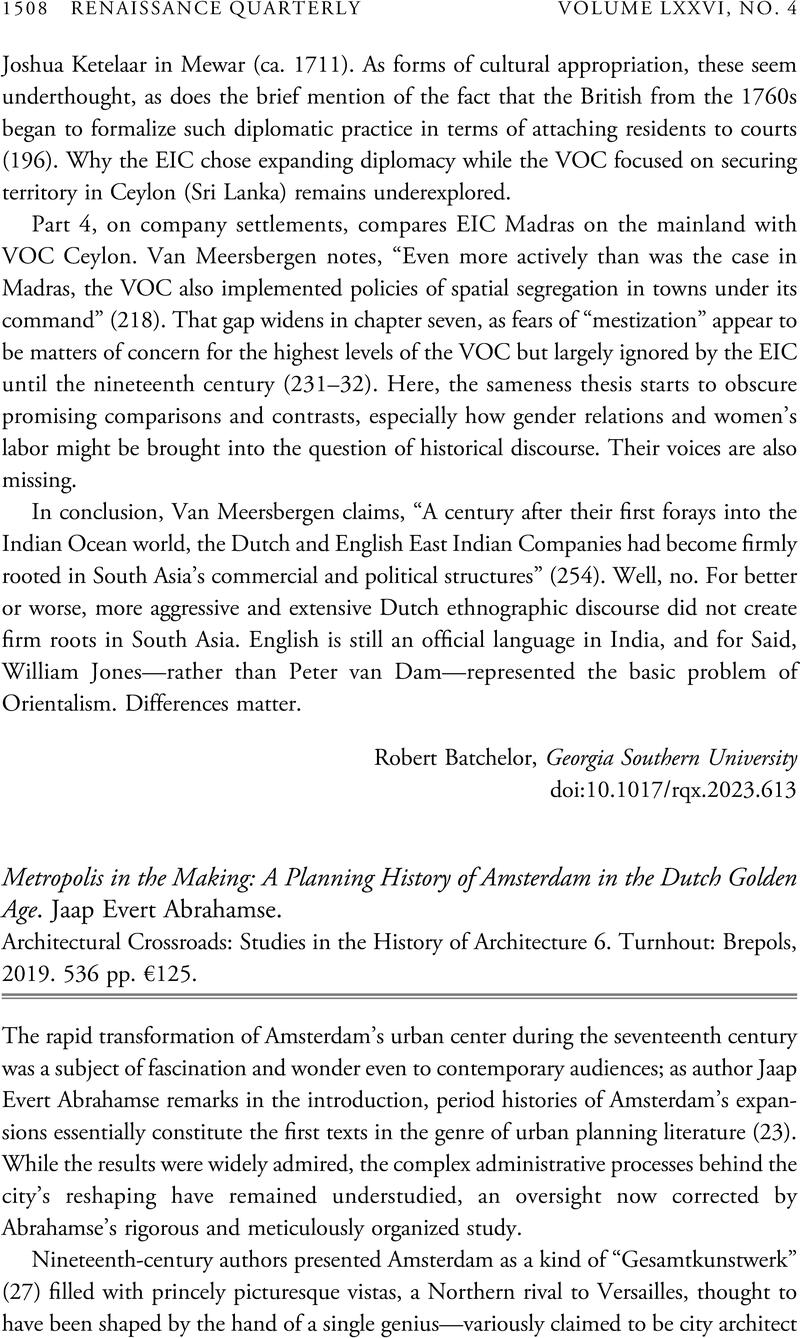No CrossRef data available.
Article contents
Metropolis in the Making: A Planning History of Amsterdam in the Dutch Golden Age. Jaap Evert Abrahamse. Architectural Crossroads: Studies in the History of Architecture 6. Turnhout: Brepols, 2019. 536 pp. €125.
Review products
Metropolis in the Making: A Planning History of Amsterdam in the Dutch Golden Age. Jaap Evert Abrahamse. Architectural Crossroads: Studies in the History of Architecture 6. Turnhout: Brepols, 2019. 536 pp. €125.
Published online by Cambridge University Press: 24 January 2024
Abstract
An abstract is not available for this content so a preview has been provided. Please use the Get access link above for information on how to access this content.

- Type
- Review
- Information
- Copyright
- Copyright © The Author(s), 2024. Published by Cambridge University Press on behalf of the Renaissance Society of America



